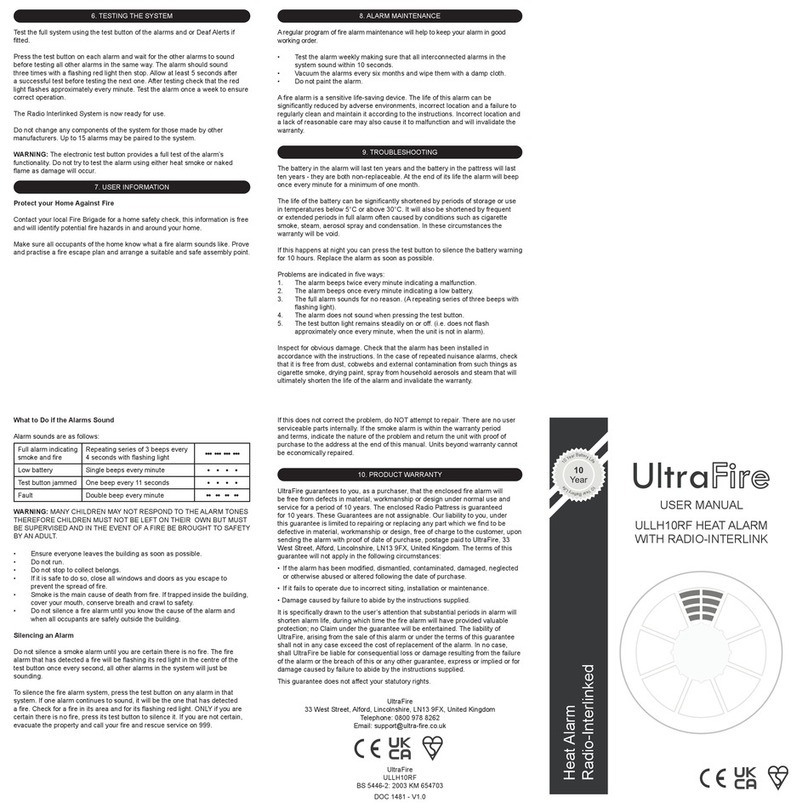
6
Status Indicators
• During standby operation the red LED will ash once every 32
seconds.
• When the battery fails or a low battery is detected, the alarm will chirp
once every 32 seconds in conjunction with the red LED ashing.
• When a fault is detected the alarm will chirp once every 32 seconds
with red LED ash.
• If the alarm has been silenced, the red LED will ash once every 8
seconds for aproximately 10 minutes.
Installation
Location
Heat alarms are recommended for kitchens, generator rooms, garages,
utility rooms, loft spaces, or other rooms which typically suer false
alarms.
Do Not Install in the Following Places:
• On walls, shelves, or cupboards
• Where the alarm is likely to be exposed to liquids
• At the very apex of pitched ceilings
• In the corner of the ceiling
• Within 30cm of a wall, light tting, or other obstruction
• In bathrooms and other rooms that will be exposed to steam
• Where the ambient temperature regularly exceeds 4°C to 38°C range
Status Indicators / Installation




























